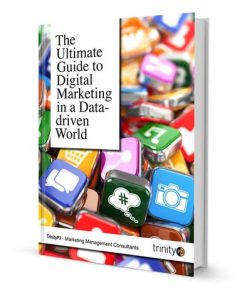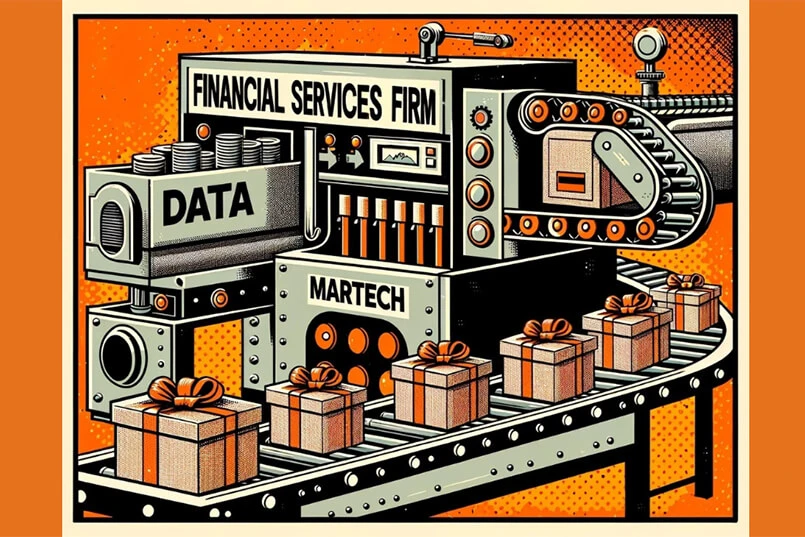Welcome to Chapter 2 of The Ultimate Guide to Digital Marketing in a Data-driven World. If you missed Chapter 1 you can read it here.
In this chapter we put digital marketing into perspective, as a silo mentality no longer applies. We look at all the key channels and activity and define how they interrelate and fit into the marketing mix.
We will be releasing this book as series of 11 posts over the coming weeks or if you don’t want to wait that long you can go to this page to download the full book right now.
Now that you are armed with the history and background of search, and a deeper understanding of it, let’s be clear on what digital marketing actually is. For it seems that everyone we speak to has a different interpretation of it.
We don’t propose our view to be all-encompassing. However, for the purposes of this guide, and to really simplify it for you, we have defined digital marketing as follows:
Digital marketing is the practice of connecting companies, products and services (or brands) to consumers through digital means. This can involve a direct hard sell (e.g. e-commerce) or a softer sell (influential) through digital content.
Digital marketing can be seen as having four characteristics:
- By connecting companies, products and services to consumers, digital is a channel accessible through a hardware device, such as a computer. There are a myriad channel forms, but the top six are:
- SMS
- Social networks: Facebook, Google+, Twitter, Pinterest, LinkedIn, to name a few
- Search engines: Google, Yahoo, Bing, Baidu (China’s number-one search engine) – these involve the organic ranking of websites, where your website is naturally scored, ranked and listed, hence the need for SEO as discussed in the previous chapter; they can also involve paid search, whereby you can pay for your website to appear on the first-page advertising area of a search engine, hence the need for SEA (search engine advertising)
- NFC based on radio frequency identification standards
- Mobile devices, including smartphones, tablets, PDAs, kiosks and surface technology
- It is also the digital format of advertising, which interrupts consumers in their online journeys – hence display advertising, paid SEA, social media advertising, quick response codes, video etc.
- Digital marketing can entail platforms containing content that informs, entices and engages consumers in order to build a closer relationship with a brand; for example, websites, apps, games, blogs and e-learning environments, as well as ‘curated content’ sources such as YouTube, SlideShare, Instagram and Pinterest. (Curated content is a collection of posts from other sites presented together in a news format or as a blog post with a unique introduction.)
- And lastly, digital marketing is measurable. The word digital comes from the same source as the words digit and digitus (the Latin word for finger), as fingers are often used for discrete counting. In fact, every digital action leaves a discrete digital fingerprint in the form of data. The recent explosion in digital activity, devices and technology has been accompanied by an equivalent explosion of data – as we mentioned in Chapter 1, the amount of global business data is doubling every 1.2 years. So it’s no wonder that you find yourself drowning in data, analytics and measurement reports. In Chapter 8, we will explore the various forms of digital marketing measurement to help you make more sense of your activity, and to demonstrate how to map it back to your business goals.
To recap, using the KISS principle (keep it simple stupid), digital marketing is four things:
- A channel
- An advertising opportunity
- Content
- Immediately measureable
So how does digital marketing fit into the mix? Neatly, or is it a grey area?
Unfortunately, it’s most often the latter. Digital marketing, by our definition, is a channel for connecting with consumers, just like TV, magazines, radio and catalogues. But we’ve also defined it as advertising and other content that can be distributed, just like a 30-second TV or radio ad. Yet digital is distinctive. It is interactive, not one-dimensional or one-way. Digital offers an opportunity for immediate interaction, as well as the continuation of a story or journey that transcends borders 24/7, 365 days of the year.
The truth is that digital is a detailed, specialist area underpinned by a myriad formats, options and technologies, hence the confusion.
So again, where does it fit in?
- Advertising – yes, if in a digital format or a digital channel
- PR – yes, if in a digital format or a digital channel
- Direct marketing – yes, if in a digital format or a digital channel
- Database marketing – yes, if in a digital format or a digital channel, and targeting a database of contacts
- Promotions – yes, if in a digital format or a digital channel
- Guerilla – yes, if in a digital format or a digital channel
- Inbound – yes, if in a digital format or a digital channel
- Influencer – yes, if in a digital channel or platform
- Telemarketing – yes; phone calls are digitised, and telemarketing technology increasingly is becoming cloud-based and automated
Have you spotted the commonality?
The world is going digital. Just as happened when the world became industrialised, it’s no longer a matter of digital marketing being seen in isolation in a silo, as it was during the first digital revolution. Rather, in this second digital revolution, it is critical to see digital as a form of marketing that either augments or modifies your current traditional activity.
That means it is crucial that you break down some of the silos that your business has been built on, including those established during the first digital revolution: the website team, social team, database team, analytics team and technology team. The new marketing team should be digital by nature. It should be an expert not only in the 4Ps – product, price, place and promotion/advertising – but also in what one global agency has termed the 4Es:
- Experience – the digital (and non-digital) customer journey of discovery, which has led to the creation of the chief experience officer role
- Everyplace – the multitude of digital (and non-digital) channels and touchpoints, ranging from interruption to interception to retargeting
- Exchange – more than just a pricepoint, this is what you can offer customers in exchange for their attention, engagement and permission; it has led to the creation of the chief content officer role
- Evangelism – the power of advocacy, word of mouth and brand passion
Now while this all sounds nice in theory, in practice, for marketers, there are still plenty of budgets being split by discipline. And digital marketing, by association, needs a box to fit in – although we would challenge you not to do this.
The current major digital marketing boxes are as follows:
- Online advertising
- Website
- SEO and PPC
- Database and CRM (customer relationship management), including email
- Social
- Technology
However, new boxes are being added by the day:
- Mobile (including responsive design for websites)
- Content marketing
- Video, webinars and virtual events
- E-learning and employee training
- Applications
- Digital analytics
- Social sentiment and monitoring
But maybe we should think differently and move from product-centricity to customer-centricity, creating a ‘customer budget’. This would cover the various budget items under the 4Es and focus more on customer status, journeys, life cycles and levels of happiness with a brand. We’ll explore this a little further in Chapter 5.
So to close out this chapter, what have we learned?
We have highlighted that digital is an evolution of your current activity. While it does require specialist skills, it must ultimately be judged using the same business acumen that you have always applied to your business:
- How will it impact on or benefit your customer?
- How will it add to your bottom line?
In the next chapter, we will explore how to put digital marketing into practice and how best to approach it from a resource perspective. You can read Chapter 3 here.

This comprehensive Guide will not only demystify the world of digital and data by explaining how it works, it will also help you put some logic back into your marketing approach.
There are no bells, no whistles, no hype.
This Guide simply aims to help marketers get back to basics, business logic and follow the path from confusion to clarity…




